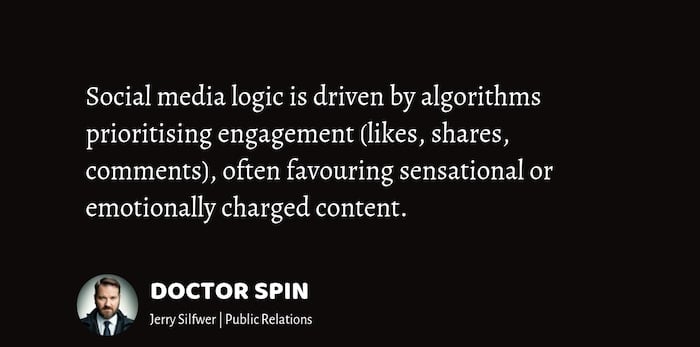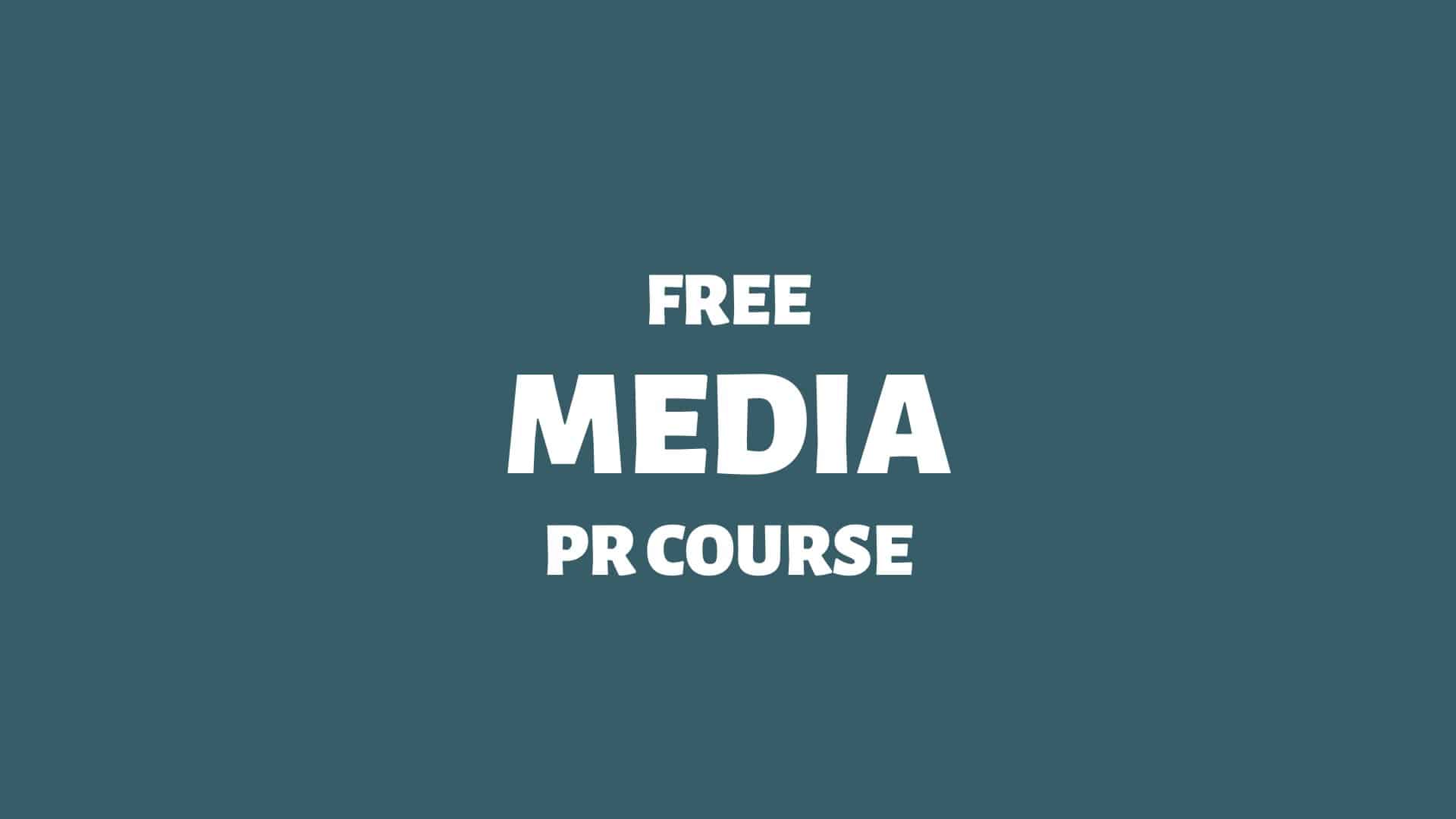Social media logic is just ‘media logic’ — amplified.
In this blog post, social media logic refers to the media effects that social media platforms have on communication and content dissemination.
Apart from a heightened level of complexity, social media logic is surprisingly similar to classic media logic. From a theoretical perspective, they’re both forms of media.
However, social networks seem to amplify the effects of classic media logic.
Here we go:
Enter: Social Media Logic
Media logic is a set of theories describing how the medium affects the media. Typically, the format (as the medium dictates) influences the mediated message.
“Media logic is defined as a form of communication, and the process through which media transmit and communicate information. The logic and guidelines become taken for granted, often institutionalized, and inform social interaction. A basic principle is that media, information technologies, and communication formats can affect events and social activities.“
Source: The International Encyclopedia of Political Communication 1Altheide, D. L. (2016). Media Logic. The International Encyclopedia of Political Communication, 1 – 6. https://doi.org/10.1002/9781118541555.wbiepc088
As famously stipulated by Marshall McLuhan, “The medium is the message.” What are the typical effects of media logic on mediated messages?
Classic Media Logic Effects
Classic media logic is hypothesised to influence the news media in the following ways: 2Nord, L., & Strömbäck, J. (2002, January). Tio dagar som skakade världen. En studie av mediernas beskrivningar av terrorattackerna mot USA och kriget i Afghanistan hösten 2001. … Continue reading
The effects of the above media logic can also be recognised in social media. Still, social network algorithms seem to add even more effects:
Social Media Logic Effects
“Social media logic, rooted in programmability, popularity, connectivity, and datafication, is increasingly entangled with mass media logic, impacting various areas of public life.”
Source: Writing Technologies eJournal 3Dijck, J., & Poell, T. (2013). Understanding Social Media Logic. Writing Technologies eJournal. https://doi.org/10.17645/MAC.V1I1.70
Based on the suggested additions for social platforms, we can add four extra dimensions to the classic media logic effects model:
Social media logic seems entangled with classic media logic. While more complex, social networks seem to amplify the effects of classic media logic.

Learn more: Social Media Logic
More Participation, More Interaction
Unlike traditional media logic, social media logic is more participatory and interactive, where users are not only consumers of content but also active creators and sharers.
This democratisation of content creation leads to diverse voices and perspectives. Still, it also poses challenges, such as the rapid spread of misinformation and the formation of echo chambers. 4Silfwer, J. (2022, September 6). Social Media — The Good, the Bad, and the Ugly. Doctor Spin | The PR Blog. https://doctorspin.net/social-media/
Social media logic is driven by algorithms prioritising engagement (likes, shares, comments), often favouring sensational or emotionally charged content. This can lead to the amplification of extreme viewpoints and polarising content. 5Silfwer, J. (2021, May 15). Social Media Algorithms and How They Rule Our Lives. Doctor Spin | The PR Blog. https://doctorspin.net/social-media-algorithms/
Additionally, social media platforms facilitate real-time communication and networking, making them powerful tools for social mobilisation and community building. However, this interconnectivity can lead to the rapid escalation of conflicts and the spread of ‘fake news.’
In essence, social media platforms significantly shape public opinion, often emphasising popularity and engagement over accuracy and depth. They are redefining how information is consumed, shared, and understood in the digital age.

THANKS FOR READING.
Need PR help? Hire me here.

What should you study next?
Spin Academy | Online PR Courses

Spin’s PR School: Free Media PR Course
Elevate your public relations skills with this free Media PR Course—a must-have resource for all aspiring public relations professionals. Boost your career now!
Media Theory
Media Logic
Journalism
Digital Media
Learn more: All Free PR Courses
💡 Subscribe and get a free ebook on how to get better PR.

Annotations
| 1 | Altheide, D. L. (2016). Media Logic. The International Encyclopedia of Political Communication, 1 – 6. https://doi.org/10.1002/9781118541555.wbiepc088 |
|---|---|
| 2 | Nord, L., & Strömbäck, J. (2002, January). Tio dagar som skakade världen. En studie av mediernas beskrivningar av terrorattackerna mot USA och kriget i Afghanistan hösten 2001. ResearchGate; Styrelsen för psykologiskt försvar. https://www.researchgate.net/publication/271014624_Tio_dagar_som_skakade_varlden_En_studie_av_mediernas_beskrivningar_av_terrorattackerna_mot_USA_och_kriget_i_Afghanistan_hosten_2001 |
| 3 | Dijck, J., & Poell, T. (2013). Understanding Social Media Logic. Writing Technologies eJournal. https://doi.org/10.17645/MAC.V1I1.70 |
| 4 | Silfwer, J. (2022, September 6). Social Media — The Good, the Bad, and the Ugly. Doctor Spin | The PR Blog. https://doctorspin.net/social-media/ |
| 5 | Silfwer, J. (2021, May 15). Social Media Algorithms and How They Rule Our Lives. Doctor Spin | The PR Blog. https://doctorspin.net/social-media-algorithms/ |


